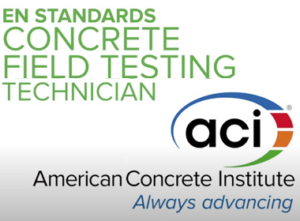 The Concrete Reinforcing Steel Institute (CRSI) recently released its newly updated 10th edition of Placing Reinforcing Bars and second edition of Field Inspection of Reinforcing Bars.
The Concrete Reinforcing Steel Institute (CRSI) recently released its newly updated 10th edition of Placing Reinforcing Bars and second edition of Field Inspection of Reinforcing Bars.
Placing Reinforcing Bars
Written for apprentices, journeymen ironworkers, and inspectors, Placing Reinforcing Bars provides the most accepted and current practices in placing reinforcing bars in structures and pavement.
The 18 heavily illustrated chapters cover such topics as safety precautions, types of materials, handling of bars at the job site, general principles for bar placing, splicing and tying, inspection, and, bar placement in footings, walls, columns, floors, roofs, pavement and transportation structures. A chapter on epoxy-coated and other coated reinforcement is also included in this guide.
Notable updates and revisions to the 10th edition include:
- Updates to bar marking coverage;
- Typical reinforcing bar bend shapes expanded;
- Updated standard and stirrup/tie hooks date;
- Updated reinforcing bar fabrication tolerances;
- Expanded coverage regarding placing drawings and bar lists;
- Updated hoisting equipment and hand signal illustrations;
- Revised coverage of bar supports;
- Expanded field placing tolerances with the addition of vertical bar placement;
- Extensive coverage of recommended first/last bar placement;
- The safety chapter was moved to the first chapter to emphasize the importance of field safety; and
- New bar size #20 added.
Field Inspection of Reinforcing Bars
An overview of placing reinforcing bars, the new Field Inspection of Reinforcing Bars contains updated content to coincide with ACI 318 (2019) and also includes Appendix A (US Manufacturers of Reinforcing Bars). The guide also examines material inspection, installed reinforcing bar tolerances, visual inspection of installed rebar, plus more. You can use this guide either in combination with the Placing Reinforcing Bars publication, or as a standalone product.
Chapters in the Field Inspection of Reinforcing Bars discuss such topics as:
- Safety precautions;
- Inspection of reinforcing bars;
- Rust on reinforcing bars;
- Radial prefabrication (Bend Type 9);
- Bending, straightening, and also rebending reinforcing bars;
- both specialty and corrosion-resistant steel reinforcement;
- Updated reinforcing bar identification guide.
Both titles, along with all of CRSI’s trusted publications, can be purchased from either the CRSI webstore at www.crsi-webstore.org, or by calling CRSI at 847-517-1200.
About the Concrete Reinforcing Steel Institute
Founded in 1924, the Concrete Reinforcing Steel Institute (CRSI) is a technical institute and Standards Developing Organization (SDO). It stands as the authoritative resource for steel reinforced concrete construction. Among the Nation’s oldest trade associations, CRSI offers many industry-trusted technical publications, standards documents, design aids, reference materials, and also educational opportunities.
CRSI’s members represent over 80% of the U.S. manufacturers, fabricators, and placers of steel reinforcing bar and related products with over 600 locations in 49 states, and more than 15,000 employees. Members produce, fabricate and install approximately 9 million ton of reinforcing steel per year using scrap steel in efficient manufacturing operations. Estimates show that the industry impacts over 75,000 people in both steel transportation and placement in North America.
The CRSI membership also includes professionals across the country who are involved in the research, design, and construction of steel reinforced concrete. CRSI staff comprises a nationwide region network of industry professionals.













